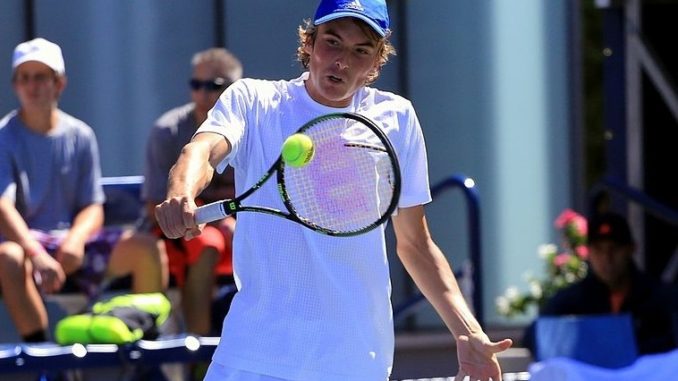
One of the most widely discussed topic on the men’s tour in recent times has been the advent of the next generation of tennis players on the ATP circuit (referred to as “Next Gen”) and some very worthy contenders to take over from the decade long (and longer) dominance of the Big 3 (Roger Federer, Rafael Nadal and Novak Djokovic).
Of the last 60 Grand Slams, 51 have been won by either of Federer, Nadal or Djokovic. This is domination of a kind not seen in the sport ever before, or for that matter rarely seen in any sport.
Over the years, there have been many who have been branded as competitors and successors to this era, beginning from the likes of Thomas Berdych, Jo-Wilfried Tsonga, David Ferrer, Juan Martin DelPotro, Stanislas Wawrinka, Milos Raonic, Kei Nishikori, Marin Cilic and others. The one name that has been closest to the ‘Big 3 League’ and created the ‘Big 4’ has been Andy Murray. However, despite always being in the reckoning, with three Grand Slam titles compared to 15 (Djokovic), 18 (Nadal), and 20 (Federer), Murray has always been a slightly distant fourth best.
As we get to the end of this decade, and the Big 3 get well into their 30’s , with Federer into his late 30s, the rise of the ‘Next Gen’ (almost half a generation after the likes of Cilic, Nishikori, Del Potro) is upon us.
These are a brand of players in their (very) early 20s, considerably more mature for their age than many of the tennis greats were at that age, and bring a brand of fearless tennis to the court. The likes of Dominic Thiem, Alexander Zverev, Stefanos Tsitsipas, Daniil Medvedev, Karen Khachanov, Borna Coric, Denis Shapovalov , Felix Auger- Aliassime are definitely among us and have proven themselves to be a force to reckon with, as they have moved up the ATP rankings fairly rapidly.
With Masters 1000s under their belt (Thiem, Zverev, Khachanov), ATP Tour Finals champions (Zverev) and victories against the Big Three (Thiem, Zverev, Khachanov, Tsitsipas, Coric), this generation definitely has the talent and ability that proves that they are not to be taken lightly. However, there still remain questions around their ability to be a force in Grand Slams in particular.
Since Wawrinka defeated an off-color Djokovic to win the 2016 US Open, the last ten Grand slams have been won by one of the ‘Big Three’. The only member of the ‘Next Gen’ that has somewhat consistently been a force in Grand Slams is Dominic Thiem at the French Open, with four consecutive semifinal appearances, and being a finalist in both 2018 and 2019, as well as defeating Novak Djokovic twice in three years at Roland Gaross.
As we get to the halfway point of 2019, with two Grand Slams over and two remaining, one continues to be hopeful for a stronger run by ‘Next Gen’ at the majors. However, with two days of Wimbledon tennis and just the first round complete, most of the Next Gen is out of the tournament. With Medvedev, Auger-Aliassime and Khachanov the only members that made it past round one, the signs are not overly encouraging for the Next Gen looking to take over the mantle from the Big Three in the foreseeable future.
As we look at the draw from the second round onwards, it looks difficult to envision anyone apart from Djokovic (strong favorite), Federer (relatively strong second favorite) or Nadal (not to be discounted once in week two), winning the third Grand slam of the tournament. With just one grand slam to come in 2019 after this, we could well be at the turn of another decade and ask the same question, “Who next after the Big Three?
Be the first to comment